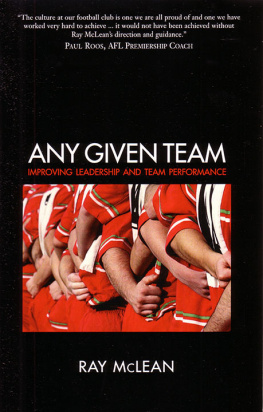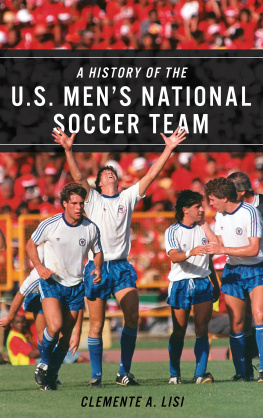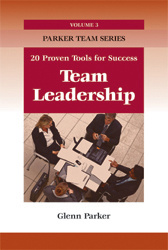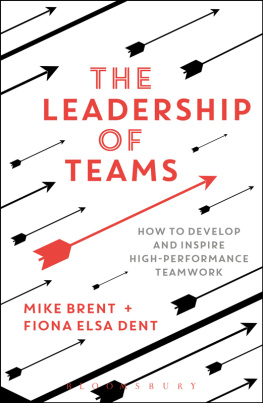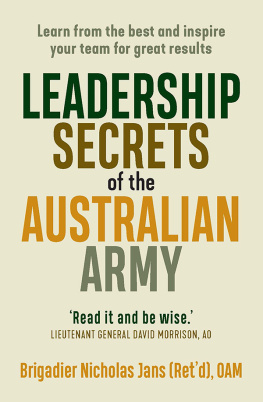Hows Your Team Going?
There are no shortcuts to good leadership and teamwork but diagnosing the problem doesnt take long at all. You can do it yourself.
How would your team describe itself? Is that congruent with what you want?
What behaviours do you tolerate in your team that you know are counter-productive? Listen carefully to the people around you. Do you hear the language of responsibility? Or the language of blame and excuses? Does your teams culture harbour any deep-seated excuses for poor performance?
Who are the real leaders in your organisation? What gets noticed in your organisation? Why?
Is feedback given in your team? Is it honest? Is it done face-to-face? How do the recipients respond?
What are the consequences for non-compliance with trademark behaviours? Who are the custodians of those standards?
Theres your answer.

ANY GIVEN TEAM
Ray McLean taught physical education in country Victoria for eight years before joining the Royal Australian Air Force where he was assigned to redesigning leadership and teamwork training at the Airman Aircrew Flying Training School. He left the RAAF in 1994 to establish his own training consultancy, adapting performance improvement principles to sport and business. He is currently the Director of Training for Leading Teams and lives in Ballarat with his wife and three children.
ANY GIVEN TEAM
Improving Leadership and Team Performance
Ray McLean
Copyright Ray McLean 2006
First published 2006
Reprinted March 2010
This edition 2015
All rights reserved. No part of this book may be reproduced or transmitted in any form or by any means, electronic or mechanical, including photocopying, recording or by any information storage and retrieval system, without prior permission in writing from the publisher.
A PAUL G. CONROY BOOK for
LEADING TEAMS
J95, 21 Hall street
Port Melbourne VIC 3207
Phone: (03) 9654 3744
Email:
www.leadingteams.net.au
National Library of Australia
Cataloguing-in-Publication entry
McLean, Ray J, 1959
Any Given Team: Improving Leadership and Team Performance
ISBN 9781925280722 (eBook)
Leadership.
Teams in the workplace.
Teamwork (sports). I. Conroy, Paul. II. Title
658.4022
Digital edition distributed by
Port Campbell Press
www.portcampbellpress.com.au
eBook Conversion by
CONTENTS
For Sally, Courtney, Jackson and Jesse,
who let me chase a dream
Preface
Generally Id start a workshop with the question, What did you expect to learn by coming here? Before you read the following chapters, Id like you to think about that question. What are you hoping to learn from this book? Learning something is so utterly different to being taught it. Learning, as Einstein said, is whats left when you have forgotten all you have been taught.
Some years ago I saw a cartoon that to me illustrated perfectly the gulf that exists between learning and teaching. Featuring Stripe the dog and some young boys, Stripes master says proudly, I taught Stripe to whistle. His friends cock their ears and listen and wait Eventually one of the boys says, I cant hear anything. Stripes owner, still looking pleased with himself, replies, Oh no, I only taught him. He didnt learn anything.
That distinction between teaching and learning has been central to my thinking for the fifteen years that I have been involved in leadership and teamwork development training and it remained so when I sat down to write this book. On the one hand, I wanted to share some of the experiences Ive had working with individuals and teams and to introduce readers to some ideas they might not have previously considered for improving individual and team performances. On the other, what would be the best way to relate what I learned without resorting to dry lists of principles, guidelines and rules? Because what would the reader be left with when they put that book down? What would they have learned? Would they even read it?
In the end I rejected the impersonal version, and not just because its a dull way to look at what I recall as being full of colour and movement, intriguing personalities and some unforgettable odours, but because whenever Ive learned anything its been from being around people.
When I first tried to write a book on what Ive learned, I didnt go back far enough or in enough detail, wanting to avoid, perhaps, the impression that I was presuming to be writing an autobiography. So skirting the names and places seemed like a good idea at the time. But the results tended towards a textbook, and a not very useful one at that. As a diagram and checklists the framework doesnt do a lot, not without people in it. More illuminating, I think, is a simple retelling of how the framework evolved among people and from real situations and how it has been adapted and successfully applied to other situations.
At workshops and sessions Ive attended people are sometimes curious to know how I came across a particular idea or, more broadly, how I ever came to be in a position to be developing a framework with applications across so many areas. The usual constraints time, time and time has often meant recounting abbreviated versions of events but, thankfully, not for often or long enough to have forgotten what really happened.
Much of the work I do now to help improve individual and team performance is based firmly on what was learned along the way, about how I and others behaved in particular circumstances and why we behaved the way we did. In that sense, the programs for individuals and teams now being implemented by businesses, sports teams and other groups really do have their origins in north-central Victoria in the mid-1980s, me pushing a pram about the backstreets of a country town, ambivalent about my work and anxious for the future.
The people and organisations named in the text played significant roles in developing a model increasingly being identified by business, education and sporting organisations across Australia and internationally as their favoured model for improving team performances. How many of those perched in skyscrapers or working out in four-tier stadiums would recognise that parts of the model they are following were devised over a few beers in the South Australian dust and developed among weekend footballers in draughty corrugated-iron sheds in northern and western Victoria? I sincerely hope the individuals I name, as well many others I dont they will know who they are appreciate just how significant their roles were in setting the foundations for the burgeoning field based on the principles they helped devise.
As I discuss in the main text, books and overhead transparencies are, so far as learning goes, inferior substitutes for getting out there and actually doing it; no book, this or any other, is going to transform readers into great leaders or make them the ultimate team players. That takes practice.
When you put the book down I hope youll have some new ideas perhaps even some new attitudes to put into practice for your own improvement and for the improvement of the teams you work in or lead.
RJMBallarat, 2006
Foreword
After a season as senior coach with the Central District Football Club in the South Australian National Football League, I realised that if we were going to be successful there needed to be significant changes in the way the club and the team approached their football. Ray McLean outlined his program to me and how it might change the clubs culture. Importantly, he said it would need time probably two to three seasons for the change to take place. Id always seen it as a coachs responsibility to enforce discipline, implement game plans and tactics, demand higher standards and motivate the team and the individuals in it. With Rays program, I had to adjust to the team having much more input to what happened both on and off the field. At times it was confronting and there were casualties along the way but it did create a healthy environment where everyone at the club had a clear understanding of what had to be done to win the respect of the football community. Above all, the program taught me the importance of the team as a powerful resource in the quest to produce the best outcomes.

